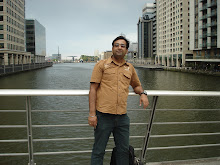
An elephant's trunk has the strength to uproot a tree as well as the finesse to pick up a needle.
Ganesha's trunk symbolises the fact that the wise person has both immense strength and fine discrimination. Ganesha has large ears. The wise person hears all. He has four hands. In one hand he holds a lotus, the symbol of enlightenment. In the other hand he holds a hatchet. That is, the old karma, all your sanskars, the accumulated good and bad of past deeds get cut when enlightenment comes.
The third hand holds laddus, the round sweet-meats. They are the rewards of a wise life. Ganesha is never shown eating the laddus. The wise man never partakes of the rewards of his deeds. He is not attached to them. The fourth hand is shown blessing the people. The wise man wishes the best for everyone.
Ganesha has only one tusk; the other is shown broken. There is an interesting story as to how Ganesh happened to get an elephant's head and how one tusk got broken. The symbolism of the broken tusk is that the wise person is beyond duality.
We tend to think that we end when our bodies end in the material world. We are the first person. All else is different. This duality is created by the mind which creates the ego to help us survive in this world. This 'me-other' duality is the screen keeping us from realising our real Self, which is beyond body and mind. Once we transcend this duality, we see the entire Universe as a single whole and we become aware of our true Selves. The single tusk of Ganesha symbolises this non-duality. Wisdom allows us to see all as one and ourselves an integral part of the whole.
Ganesha is shown sitting with one foot on the ground and the other resting on his knee, above the ground. The wise person is of this earth, yet not entirely of this earth.
Ganesha is shown seated on a rat. The reason for saying that Ganesha 'rides' on the rat is that the rat is among the greediest of all animals. It will keep nibbling at whatever is available, eating everything it can. Scientifically, too, the rat's teeth keep growing and it has to keep chewing on something to keep these within limits. The rat is a symbol of our senses, which are never satisfied. They crave new experiences, new tastes. Left uncontrolled, they keep growing forever. The wise person rides on his senses. He keeps them under control.
Ganesha is often shown seated in front of a tray of sweets. In these images the rat is shown sitting in front of Ganesha, perhaps a bit to one side, looking up at him. The senses of the wise person are under his control and the rat dare not eat the sweets without the permission of Ganesha.
When we say "Aum Ganeshaya Namah" before starting anything what we are saying is that "In what we are about to do, let wisdom be our guide".

